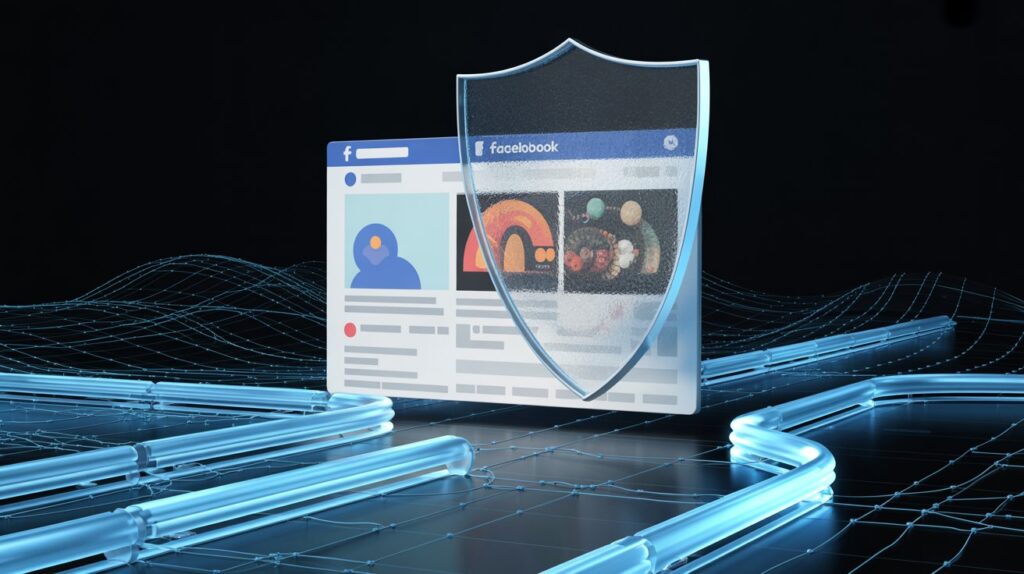
If you’ve been running Facebook ads for any amount of time, you know how unpredictable things can get. One day your campaign’s scaling smoothly; the next, Facebook slaps you with a rejection — sometimes for no clear reason. That’s exactly why Facebook ad cloaking 2025 is such a big talking point. It’s not about trickery anymore. It’s about protecting your campaigns from false flags and giving your ads a fair chance to perform before they’re judged by bots.
I’ve seen so many marketers lose accounts, not because they were running shady offers, but because Facebook’s automated system misread their intent. That’s where cloaking — done right — comes in.
Why People Still Cloak in 2025
Facebook’s policies haven’t gotten looser — if anything, they’ve become tougher. Certain verticals like crypto, finance, and even health can get flagged instantly. Sometimes, even harmless ads get caught in the net.
Cloaking exists to separate what Facebook sees from what users experience. The platform’s moderators — or more often, algorithms — see a clean, compliant “white page.” Real users, meanwhile, get directed to the full version of your offer.
It’s not about deception; it’s about survival. Facebook’s system isn’t perfect, and when legitimate campaigns get flagged unfairly, cloaking gives you breathing room to test and optimize before getting penalized.
How Facebook Spots Cloaking Today
Facebook’s gotten smart — no doubt. If you’re thinking of using old redirect tricks, forget it. Those got shut down years ago.
Here’s how detection works these days:
- AI scanning: Facebook’s bots crawl ad links and flag content that doesn’t match the ad creative.
- Behavior checks: The platform tracks what users actually see and compares it to what reviewers saw.
- IP filtering: Facebook’s reviewers often use the same computers or locations, and advanced cloakers can spot them.
The main takeaway? You can’t rely on static cloaking setups anymore. Facebook’s system is dynamic, so your cloaking needs to be too.
What Still Works in 2025
After testing multiple setups (and losing more than a few domains along the way), here’s what consistently works now:
1. Smarter Filtering
The new generation of cloakers can tell the difference between human users and bots based on hundreds of small signals — location, browser type, session behavior, and more. They can even detect when Facebook’s crawlers visit in real time and serve a compliant page automatically.
2. Legit White Pages
Gone are the days of using a blank placeholder as a cover. Your white page needs to look like something a real business would publish. It should tie into your ad’s theme, even if it doesn’t reveal your full offer.
3. Domain Rotation
Even with good filtering, some domains will eventually get flagged. Having backups ready — and rotating them periodically — keeps your campaigns live longer.
4. Professional Tools
If you’re serious about cloaking, you can’t rely on old scripts. Tools like TrafficShield have evolved with Facebook’s systems. They filter traffic intelligently, update automatically, and handle domain rotation behind the scenes.
The trick isn’t just having a cloaker — it’s using one that’s kept up with the platform.
A Quick Look at TrafficShield
I’ve seen dozens of cloakers come and go, but TrafficShield has stuck around because it actually evolves. It filters traffic based on behavior, IP, and region — all in real time.
Here’s why it’s different:
- Constant algorithm updates
- Built-in IP filtering
- Simple setup, no codingfa
- Designed for compliance and safety
Visit TrafficShield
Check Facebook’s Ad Policies
Staying Safe: Lessons Learned the Hard Way
A few things I’ve learned (sometimes the hard way):
- Keep things believable. Don’t show Facebook something random — your white page should make sense.
- Start small. Test your setup before scaling. Nothing hurts like losing a big-budget campaign on day one.
- Rotate assets. Change domains and creatives regularly.
- Stay informed. Facebook updates fast. Make sure your cloaker does, too.
At this point, cloaking is less about outsmarting Facebook and more about managing risk.
The Future of Cloaking
Cloaking’s not disappearing anytime soon — it’s just changing form. Over the next year or two, expect more AI-driven systems that adapt instantly to Facebook’s reviews. Cloakers will need to behave almost like ad security tools — constantly monitoring, adjusting, and optimizing on their own.
As long as ad reviews remain automated, there’ll be room for tools that make the process fairer.
Final Thoughts
Facebook ad cloaking 2025 isn’t about trying to cheat the system — it’s about staying safe in a tough environment. Facebook’s rules keep changing, and even honest advertisers can get blocked for no clear reason. Cloaking helps you protect your campaigns, test your ads, and grow without losing everything suddenly.
If you’re serious about running long-term campaigns, treat cloaking as insurance — not a shortcut. Tools like TrafficShield make it easier to do responsibly.
In the end, staying live isn’t luck. It’s preparation.
Also Read : Trafficshield Case Studies
FAQs
1. Does cloaking still work on Facebook in 2025?
Yes, but only when you use adaptive tools. Old redirect methods don’t last more than a few hours.
2. Is cloaking legal?
It’s against Facebook’s policy, but not illegal. Many use it to avoid false flags, not to deceive.
3. What’s the safest cloaker for Facebook?
TrafficShield is one of the most trusted tools. It works well for affiliate ads and lead generation campaigns.
4. How do I avoid bans while cloaking?
Keep your white page relevant, test small, and never use misleading creatives.
Facebook’s ad system isn’t perfect, and until it is, cloaking will stay part of the game. The key is using it wisely — not to hide, but to survive.




